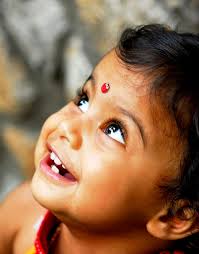Millions of new-age Indian families are stuck in the groove of helplessness. Their young ones have flown the coop and dispersed all over the world. Life is rushing forward so fast that there is time just for a phone call or email. So, who will take care of elders, bereaved widows, sisters and brothers or even lonely dependents? The family, the strongest unit of India’s people-fabric, is disintegrating fast and there is no new system in place to take over the family’s security-providing umbrella…It’s a case of ‘old Indians in a new India!’
By Vimla Patil
Janki and Ram Shah are in their late eighties. Ram, a former chairman of a large engineering company, suffered a stroke five years ago and is now completely dependent upon a daily ward boy who bathes, changes his clothes and feeds him. Without such help, Ram cannot get out of his bed, eat his meal or even take a short walk. His wife Janki is stricken badly with arthritis and cannot walk without crutches, though she handles the household budget. Both these ‘very senior’ citizens can only depend upon the money they have which is literally looted by various servants, drivers and helping hands, while they watch helplessly as the months go by.
The Shahs are not the only elder couple living in these extreme circumstances. India’s metros and cities are full of senior citizens – some healthy enough to manage their lives and some not – who are ‘abandoned’ by the very system to which they paid lakhs of rupees as taxes throughout their lives. If one goes on a recce of the best localities of Indian cities, there are many examples of wheel-chair ridden or limping elders or unfit people who are left to their own suffering in spite of lives dedicated to work for the nation in their own special capacity. If this is the state of the well-to-do, the condition of middle class or less fortunate elders is even worse. Driving around in a buzzing city like Mumbai, one can notice elders tapping on the windows of cars asking for a lift because they can neither handle a bus ride, nor can they afford a taxi. There are poorer couples squatting in the roadside shade looking for a meal of street food. Yet others do odd jobs to earn what money they can.
India is named among the top economies of the world. But it still does not provide facilities like healthcare or community life for its elder citizens like the countries of the west. Why has the situation of elders in India deteriorated so drastically in the past few decades?
Here are some causes – some obvious and some not so evident:
1. The ‘Great Indian Family’ now exists only in the villages or pockets of rural India. Even the big industrialist families have broken up into smaller units fighting in the courts for property division. They are no longer well-wishers of each other. With law suits waiting to be heard, the relationship with elders has been thrown out of the window and disabled or very senior members of the families are neglected.
2. Young people have flown the coop. In more-recently-affluent families, where money has come through education and highly paid jobs in the new, burgeoning industries, the family has changed because of the movement and travel of young people to find good educational institutions and later to look for the most lucrative businesses or employment. The 70s’ huge tidal wave of young, well-qualified doctors, engineers and scientists settling in western countries has left a significant number of middle class families in a lonely void and support-less. The ambitious young people who left, have settled permanently in the west and come home only to say ‘hi’, sometimes with a western partner who prefers to live in a hotel rather than the family home. Such strident young people are building their careers and have no time to look after their parents or dependents. There is just that odd telephone call or email when possible. Their accents have changed and so have their attitudes to their families. In such families, parents – who were well-to-do enough to nurture and finance their children’s ambitions and did so with total dedication – are left to live in an inflation-riddled society ‘back home’, cutting down their life to ‘necessities’ rather than ‘welfare’.
3. An increasing number of divorces is yet another drain on the parents. India’s Family Courts are busy dealing with divorces of celebrities like Karisma Kapoor but the underbelly of the courts shows thousands of divorces taking place among the middle and poor classes too. In many cases, parents have to support the daughter and her children through the lawsuit and its outcome and provide childcare if needed. They have ‘to be there’ for the children but the situation does not work vice versa! The sons and daughters are often ‘not there’ when parents need them.

4. Multi-lingual, multi-racial, multi-religious marriages have increased to a humongous number in the past decade. Most such young couples have their own lifestyle which does not include the parents on both sides or the wife’s parents only but not those of the husband. A case in point is the Surat family of Amritlal Chawda whose only daughter married a young businessman of a different religion. Their only daughter was brought up to belong to the father’s religion. When their daughter died of cancer, the old couple was left bereft of all support – with the grand-daughter caring more for stray puppies or doves rather than her grand-parents. It is a sad truth that this couple is being looked after by neighbours rather than their family. Multi-religion, multi-racial, multi-cultural marriages often draw a line of separation in families and this too leaves the elders to find a new life for themselves. Religion in India means not only ways of worship, but also lifestyle, food, status of women and a hundred other daily events.
5. Money makes the mare go….is an old British saying which has landed on India’s shores with a gigantic force. Children today begin to look at the wealth of their parents much before compared to earlier generations. They are aware of their parents’ earnings, savings and the valuables in the house such as jewellery, money, property, art or silver and are clear that they want it. Parents are seen giving away their nest eggs to children to avoid post-death fights in the families. Innumerable top families in India are engaged in property disputes which create hatred rather than love among parents or siblings. The tax authorities too do not spare elder citizens.
6. Among the poor and less educated, sons and their wives – and sometimes daughters – have started looking at a tiny business or even retirement benefits of a middle-class or poor father to feather their own separate nests. Children, smarter with education and better opportunities, eye the savings of old parents and want loans or gifts to start their lives. The innocence and love of old parents often leaves them in abject poverty. If earlier, parents gave to satisfy every need of their offspring, well-earning children do not return the generosity by cribbing about having to ‘support’ their parents!
7. Old parents of the past generation seem not to have understood that a giving hand is respected. An upturned palm asking for help is looked down upon. Worse still, we live in a country where people owe everything to the government. The government owes little to its citizens. The state can command and even seize assets if they have tax claims. But elders who have come to the last phase of their lives do not have anything free or subsidised. There are daily changes with identity cards, code numbers and other computerized data collection. But the elderly remain outside the circle. There is no easy and convenient medical help in normal times or in emergencies. There is no place from where inexpensive, healthy food can be bought. There are no safe places where elders can relax without fear and certainly, public transport is not sympathetic to old people.
8. The biggest problem older people face in India is the void of loneliness and the fear of being unsafe in burgeoning cities with pot-holed roads. Yes, there are institutions like Dignity Foundation*. And yes, there are old people’s homes too. But these are few and not always suitable for the reasonably well to do strata or those with major health problems. The hi-end ones are beyond the pockets of many. However, elder-care has become a high profit big business. There are new hi-fi conclaves of doctors, alternate medicine specialists, nursing services, ward boys and even ambulances with doctors – all for a yearly membership or one time price. Elders are invited to join any of these, paying fairly high fees. But the advantage is that an ambulance with a doctor comes within the promised half an hour unlike a son or a daughter.
9. To worsen the situation, with a better life expectancy rate, there are more old people in India than ever before. The fact that young couples have fewer children to devote time for career-building or to achieve higher standards of living has caused old people to become a growing section of India’s population. By 2050, say reports, India will be home to one out of every six of the world’s older persons. A report by the United Nations Population Fund/Help Age India says that India was home to 90 million elderly persons in 2011. This number will grow to 173 million by 2026. Of the current 90 million seniors, one third of people live alone and 90 percent continue to work to support themselves in some way or the other. Add to this that the number of women among elders is more than that of men. With the 80-plus section growing faster than ever before, Indian families must be held responsible for the welfare and dignity of their seniors. At present, it seems like the 90 million-strong elder population of India lives possibly with little support from their families as well as the government.
*The Dignity Foundation‘s vision is to create an enlightened society in which senior citizens feel secure, confident and valued, and can live with dignity. The Foundation is committed to changing the way people look at ageing in India. It enable senior citizens to lead active lives through easy access to trusted information, opportunities for productive ageing and social support services.







